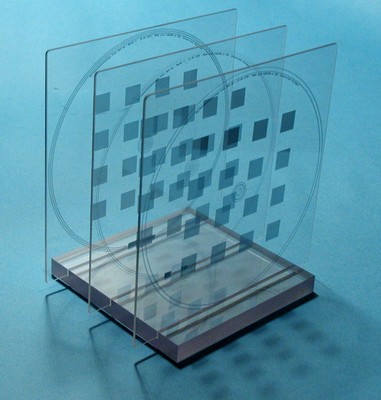
The mixture of large area and micro- to nanoscaled structures makes modelling of diffractive structures difficult, especially when realistic diffracting structures need to be taken into account. Here, the distribution of unwanted stray light varies with the local periodicity of the diffractive optical element (DOE) and the illumination wavelength. We have developed a model based local grating approximation approach that can be implemented into commercial ray tracing software [1].
The basic idea is to extend the standard local grating approximation (LGA) approach with a simulation based on a diffraction model that takes into account fabrication limitations and other above-mentioned dependencies. This can be an analytical model, a numerical model or even a model fed from experimental data. The model returns the probability to scatter light into the different diffraction orders, depending from the incoming ray data (angle, wavelength) and the local grating parameters (line density, orientation). This information is then used to decide into which diffraction order an incoming ray is directed. If the system contains several diffractive elements, this allows an automatic and efficient further splitting of the power.
Publications
- C. Pruss, R. Reichle, and W. Osten, "Realistic modeling of diffractive optical elements," EOS Topical Meeting on Diffractive Optics 2010, ISBN 978-3-00-024193-2, Koli, Finland: 2010, p. 2444

